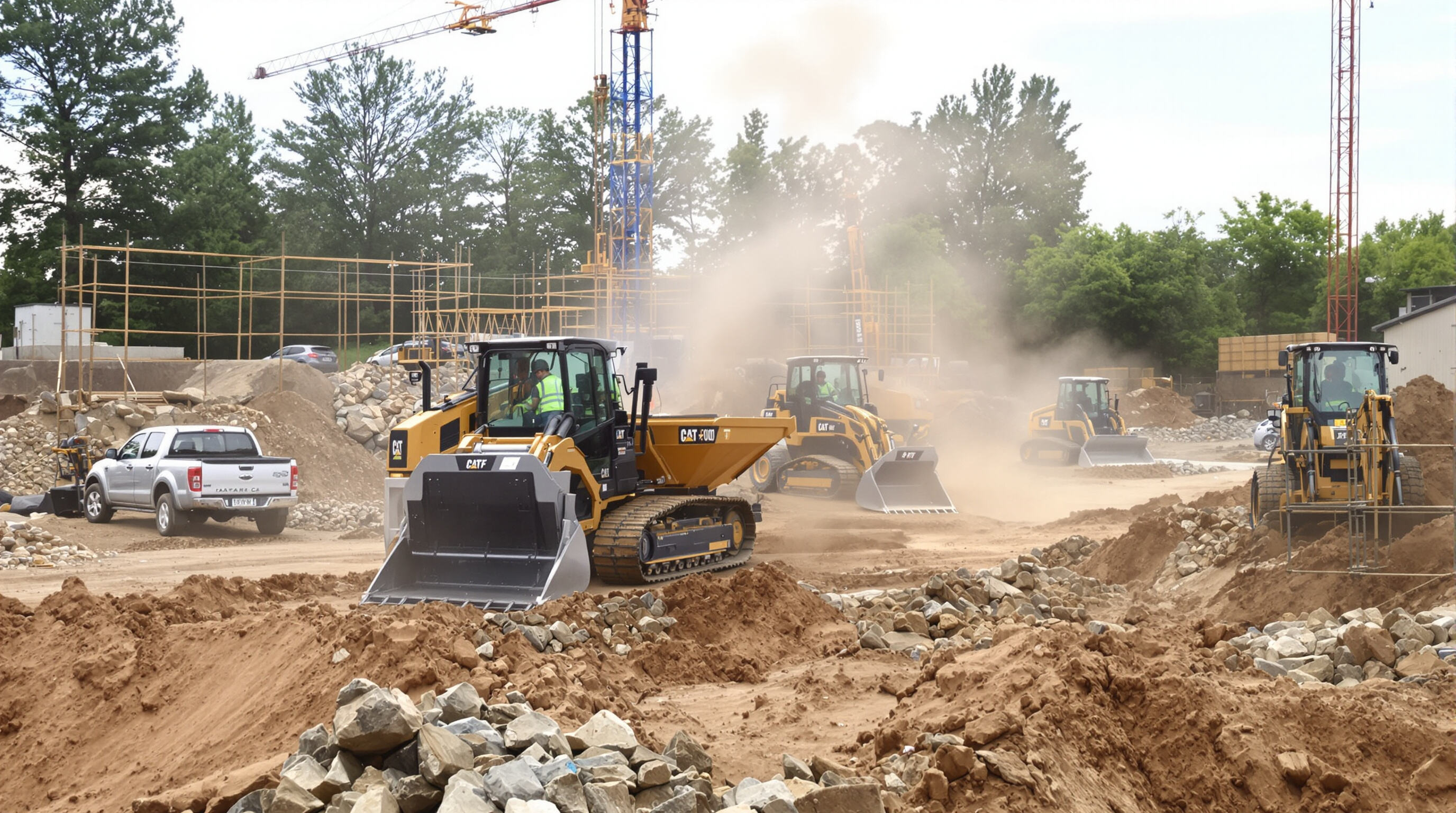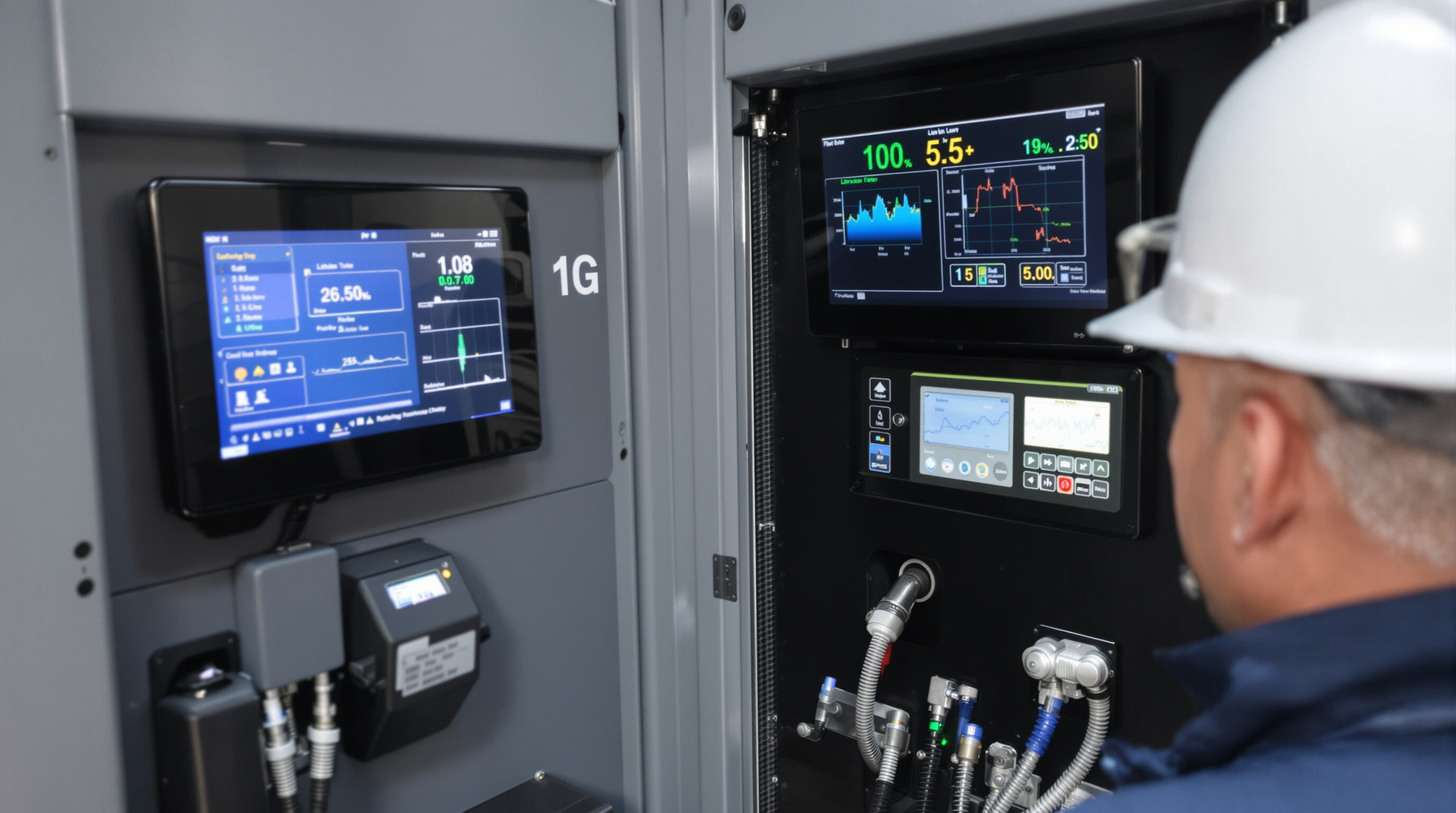Electric Mini Dumper Reduced Environmental Impact and Sustainable Construction Practices

Lowering carbon emissions with Electric Mini Dumper use
Electric mini dumpers don't produce direct exhaust fumes, which cuts down on carbon footprints at construction sites when compared to their diesel counterparts. The construction sector is responsible for around 40 percent of all global CO2 emissions as reported in the latest Global Status Report for Buildings and Construction from 2024. When companies switch over to electric versions, each machine helps keep between 8 to 12 tons of CO2 out of the atmosphere every year, plus there's no nitrogen oxide or particulate matter being released either. Making this change makes sense not just environmentally but also practically, since many places around the world are getting stricter about what kinds of emissions are allowed during building projects these days.
Environmental advantages on construction sites
Electric Mini Dumpers do more than cut down on emissions. They also stop ecological problems caused by fluid leaks and run much quieter than their old counterparts. No more worries about hydraulic oil or fuel seeping into the ground and polluting water sources, which happens all too often with conventional machinery. The noise level is way down too, usually under 75 decibels, so animals in nearby areas aren't disturbed as much. Plus, there's less vibration damage to buildings around construction sites. All these benefits mean jobsites stay cleaner overall, and companies face fewer headaches when it comes to environmental regulations and potential fines.
Electric vs. fuel-powered mini dumpers: A sustainability comparison
Electric models demonstrate superior sustainability across key metrics:
| Sustainability Factor | Electric Mini Dumper | Fuel-Powered Equivalent |
|---|---|---|
| Direct Emissions | Zero during operation | 15–20 kg CO₂/day |
| Noise Pollution | 65–75 dB (urban-friendly) | 85 dB (hearing damage risk) |
| Resource Efficiency | 30–50% lower lifecycle energy use | Higher fossil fuel dependence |
Electric variants reduce lifecycle emissions by 50% even when accounting for electricity generation, while simplified mechanics enable 95% battery recyclability—creating a circular economy advantage over combustion engines.
Lower Operating and Maintenance Costs Over Time
Fuel Savings and Reduced Energy Expenses With Electric Mini Dumper Operation
Switching to electric mini dumpers means saying goodbye to fuel costs altogether. The energy bills for these machines are about 70% cheaper compared to their diesel counterparts according to the 2023 Construction Fleet Report. Diesel run models typically burn through around $18 to $22 worth of fuel every hour, whereas the electric ones only need about $2 to $4 for power. Construction workers who operate in milder weather conditions often see extra savings too. Some folks have mentioned getting about 20% more efficiency from regenerative braking features that actually grab back 15% to 18% of the energy used when moving downhill with loads.
Simplified Maintenance Due to Fewer Mechanical Components
Battery-powered models reduce maintenance complexity by eliminating:
- Engine oil changes (saving $200–$400 annually)
- Air filter replacements ($120/year)
- Fuel system overhauls (avoiding $800–$1,200 repair cycles)
With 40% fewer moving parts than combustion engines, electric drivetrains require only quarterly inspections of brushless motors and annual battery diagnostics. Maintenance checklists shrink from 50+ items on diesel units to under 15 tasks for electric variants.
Total Cost of Ownership: Electric Mini Dumper vs. Petrol Models
Over a 3-year lifespan, electric models show 23% lower TCO despite higher initial costs:
| Cost Factor | Diesel | Electric | Savings |
|---|---|---|---|
| Energy/Fuel | $28,900 | $8,200 | $20,700 |
| Maintenance | $16,400 | $5,900 | $10,500 |
| Downtime Losses | $9,300 | $2,100 | $7,200 |
Early adopters offset purchase price premiums within 14–18 months through operational savings.
Real-World Case Study: Reduced Downtime and Service Costs
A 22-unit electric fleet replacing diesel equipment at [industrial site anonymized] saw:
- 52% fewer maintenance hours (1,200 → 576 annually)
- 15–20% lower service costs ($18k → $14.4k/year)
- Zero emissions-related repairs vs. $4,100/year catalytic converter issues
These results align with industry benchmarks for fleet electrification, which show 60% of operators achieving ROI within 2 years of transitioning to electric construction equipment.
Quieter Operations Enhancing Worksite Safety and Compliance
Noise reduction in Electric Mini Dumper fleets in urban environments
Electric mini dumpers run much quieter than their diesel counterparts, cutting down noise by around 10 to 15 dB(A) in busy city areas. The reason for this quieter operation is simple really they don't have those noisy combustion engines anymore, so there's far less vibration shaking through buildings and roads. Jobsites located close to places like hospitals, schools or apartment complexes find these machines especially useful. Contractors can work longer hours without getting into trouble with local noise regulations, which makes a big difference on tight schedules. Some construction companies report being able to start earlier in the morning too since neighbors aren't as bothered by the sound.
Improved communication and safety through lower noise levels
Quieter machinery makes jobsites safer because people can actually hear each other talking. Ground crew members are able to call out dangers and organize their work better without shouting over loud engines, which cuts down on accidents. When there's less background noise overall, workers don't get as tired from straining to listen all day long something that studies show leads to mistakes. Plus, many workers no longer need those bulky earplugs or earmuffs that everyone hates wearing. The result? Everyone stays more alert while moving materials around the site since they can focus on what's happening instead of fighting against constant noise.
Meeting noise regulations and improving community relations
Electric mini dumpers are hitting those tough noise limits set by EU Stage V standards (around 97 dB or less), which means no fines or work stoppages for contractors. The fact that these machines run so quietly changes how neighbors view construction sites. Urban planners have noted something interesting too complaints from nearby residents drop between 40 and 60 percent when electric models are used. For construction companies, this quiet operation becomes a real selling point when they need permission to work near schools or hospitals. Plus it looks good on their sustainability reports, showing clients they care about both profits and people.
Superior Performance and Control in Modern Construction Settings
Instant Torque Delivery for Efficient Load Handling
Electric mini dumpers kick out maximum torque right from the start, no waiting around for power like with gas engines. The instant power means these machines can accelerate fast even when loaded down, cutting down on how long it takes to move materials back and forth. Workers notice they climb hills much smoother too, and the performance stays pretty much the same whether the dumper is carrying light or heavy loads. Real world tests show operators get about 18% more done during loading operations compared to older models, based on those latest construction efficiency numbers from 2023.
Compact Design Enabling Enhanced Maneuverability in Tight Spaces
Electric Mini Dumpers take up about 30 percent less space compared to regular models, which makes them really good at moving around tight spots and busy city construction sites. The machines have what's called a zero tail swing design plus electronic steering that lets operators work in circles even when there's barely any room to spare. Think basements being remodeled or those super packed downtown areas where every inch counts. Because these little dumpers don't need much space to operate, workers spend less time moving things around and don't have to pay for expensive changes to the worksite just to fit bigger equipment through.
Integration of Electric Mini Dumper Systems into Smart Job Site Ecosystems
The latest equipment comes equipped with CAN-BUS tech that works pretty well with telematics systems for managing fleets on the fly. Crew managers get to check things like how much juice is left in batteries, where machines are located, plus all sorts of performance numbers right from their main control panels. When these systems talk to each other properly, it makes sense planning when maintenance needs doing and assigning jobs automatically across smart construction sites connected via IoT networks. Some recent research shows this kind of setup cuts down wait times during operations by around 22 percent, which definitely matters for keeping projects moving smoothly.
Advanced Battery Technology and Charging Efficiency

Real-World Battery Life and Performance of Electric Mini Dumpers
Modern Electric Mini Dumpers leverage lithium-ion batteries delivering 6–8 hours of continuous operation under typical load conditions. Smart battery management systems (BMS) dynamically adjust power output, extending runtime by 18–22% compared to older models. These systems monitor state-of-charge (SOC) and cell temperatures, ensuring optimal performance even in extreme job site environments.
Fast-Charging Innovations Minimizing Operational Downtime
Breakthroughs in charging protocols now enable 80% battery replenishment in under 15 minutes for compatible Electric Mini Dumper models. AI-optimized charging profiles reduce heat generation by 40%, addressing historical concerns about rapid charging degradation. This allows operators to schedule short charging intervals during shifts without interrupting workflow.
Lithium-Ion Advancements Boosting Longevity and Efficiency
The latest generation of lithium ion batteries can handle around 2000 charge cycles before dropping below 80% capacity, which means these new cells last twice as long as what was used in the first electric construction machines. With better energy density reaching about 300 watt hours per kilogram, companies are able to build smaller battery packs without sacrificing the Mini Dumper's ability to navigate tight spaces on job sites. Most manufacturers have started using cathode materials that can actually be recycled, something that makes sense when thinking about how much waste gets generated at construction sites across the country.
FAQ
How do electric mini dumpers reduce environmental impact?
Electric mini dumpers reduce environmental impact by eliminating direct exhaust fumes, thus lowering carbon footprints and emissions of nitrogen oxide and particulate matter at construction sites. They also prevent ecological problems caused by fluid leaks and operate more quietly, reducing noise pollution and vibration damage.
What are the cost benefits of using electric mini dumpers?
Electric mini dumpers offer significant cost benefits, including up to 70% savings on energy expenses compared to diesel models. They have fewer mechanical components, which reduces maintenance costs, and their total cost of ownership is 23% lower than petrol models over three years despite higher initial costs.
How do electric mini dumpers perform in urban construction sites?
Electric mini dumpers are ideal for urban construction sites due to their quieter operation, reducing noise by 10 to 15 dB(A), and compact design that allows for enhanced maneuverability in tight spaces. They help in meeting noise regulations and improve community relations by reducing disturbance to neighbors.
What advancements have been made in electric mini dumper battery technology?
Advancements in electric mini dumper battery technology include longer battery life, with modern lithium-ion batteries providing 6–8 hours of operation and handling around 2000 charge cycles. Fast-charging technology allows for 80% battery replenishment in under 15 minutes, minimizing operational downtime.
Table of Contents
- Electric Mini Dumper Reduced Environmental Impact and Sustainable Construction Practices
- Lower Operating and Maintenance Costs Over Time
- Quieter Operations Enhancing Worksite Safety and Compliance
- Superior Performance and Control in Modern Construction Settings
- Advanced Battery Technology and Charging Efficiency
- FAQ

